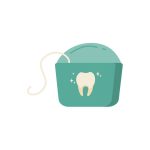1. The Importance of Hydration for Dogs
Water is a fundamental part of your dogs overall health and well-being. Just like humans, dogs rely on proper hydration for essential bodily functions. Without enough water, their bodies cant perform efficiently, leading to potential health issues. Understanding why water is crucial for your dog can help you ensure they stay healthy and happy.
Why Is Water So Important for Dogs?
Water plays a vital role in several key functions within your dogs body. Here are some of the most important reasons why staying hydrated is essential:
| Function | How Water Helps |
|---|---|
| Digestion | Water helps break down food and aids in nutrient absorption, ensuring your dog gets the most from their meals. |
| Temperature Regulation | Dogs regulate their body temperature by panting, which requires adequate hydration to prevent overheating. |
| Organ Function | The kidneys, liver, and other organs depend on water to filter toxins and maintain overall health. |
| Joint Lubrication | Adequate hydration helps keep joints cushioned and reduces the risk of stiffness or discomfort. |
| Circulation | A well-hydrated dog has better blood circulation, delivering oxygen and nutrients throughout the body more effectively. |
Signs Your Dog Might Be Dehydrated
If a dog doesnt get enough water, dehydration can set in quickly. Here are some signs to watch out for:
- Lethargy: A dehydrated dog may seem unusually tired or weak.
- Dry Nose and Gums: Healthy gums should be moist, not dry or sticky.
- Panting Excessively: While panting is normal, excessive panting without exercise could indicate dehydration.
- Lack of Appetite: Dehydration can lead to decreased interest in food.
- Tented Skin: If you gently pinch your dogs skin and it doesn’t snap back quickly, they may be dehydrated.
The Daily Water Needs of Your Dog
The amount of water a dog needs depends on factors like size, age, activity level, and diet. As a general rule:
- Puppies & Active Dogs: Need more water due to higher energy use.
- Seniors & Less Active Dogs: May drink less but still require adequate hydration.
- Kibble-Fed Dogs:
A good guideline is that dogs should drink about one ounce of water per pound of body weight daily. Always provide fresh, clean water and encourage them to drink regularly to maintain optimal health.
2. How Much Water Does Your Dog Need?
Making sure your dog stays properly hydrated is essential for their overall health. But how much water does your pup actually need? The answer depends on several factors, including their size, breed, activity level, and even the weather.
Factors That Influence Water Intake
Size and Breed
Larger dogs naturally need more water than smaller ones. Similarly, some breeds—especially those with thick coats or high energy levels—may require more hydration to stay comfortable.
Activity Level
If your dog loves running, playing, or going on long walks, theyll need extra water to replenish what they lose through panting and movement. More active dogs should always have access to fresh water throughout the day.
Weather Conditions
Hot and humid weather increases a dogs water needs as they pant more to regulate their body temperature. In colder months, they may drink less, but its still important to ensure they stay hydrated.
General Hydration Guidelines
A good rule of thumb is that dogs should drink about one ounce of water per pound of body weight each day. Heres a simple guide:
| Dogs Weight | Daily Water Intake |
|---|---|
| 10 lbs (4.5 kg) | 10 oz (about 1.25 cups) |
| 25 lbs (11 kg) | 25 oz (about 3 cups) |
| 50 lbs (23 kg) | 50 oz (about 6.25 cups) |
| 75 lbs (34 kg) | 75 oz (about 9.5 cups) |
| 100 lbs (45 kg) | 100 oz (about 12.5 cups) |
This is just an estimate—some dogs may need more based on their unique lifestyle and health conditions.
Signs Your Dog Needs More Water
If youre unsure whether your dog is drinking enough, watch for these signs of dehydration:
- Lethargy or low energy
- Sunken eyes
- Panting excessively
- Tented skin that doesnt bounce back quickly when pinched
The best way to keep your pup hydrated is by providing fresh, clean water at all times. Encouraging regular drinking habits will help them stay healthy and happy!

3. Signs of Dehydration in Dogs
Keeping your dog properly hydrated is essential for their overall health. But how can you tell if your furry friend is dehydrated? Recognizing the signs early can prevent serious health issues and help you take action before it becomes an emergency.
Early Signs of Dehydration
Dogs can’t tell us when they’re thirsty, so it’s important to watch for these early warning signs:
- Dry or Sticky Gums: A well-hydrated dogs gums should be moist. If they feel dry or tacky, dehydration could be setting in.
- Lethargy: If your pup seems unusually tired or less playful, they may not have enough fluids in their system.
- Sunken Eyes: Dehydrated dogs may have eyes that appear dull or slightly sunken.
- Loss of Skin Elasticity: Try gently pinching the skin between your dog’s shoulder blades. If it doesn’t quickly snap back into place, this could indicate dehydration.
Advanced Signs of Dehydration
If dehydration progresses without intervention, more severe symptoms may develop:
- Excessive Panting: While panting is normal for dogs, heavy and prolonged panting without relief can signal dehydration.
- Weakness or Collapse: Severe dehydration can lead to muscle weakness, shaking, or even fainting.
- Trouble Breathing: In extreme cases, dehydration can make it harder for your dog to breathe properly.
- Darker Urine or No Urination: Dark yellow urine or a lack of urination means your dog is not getting enough fluids.
When to Seek Veterinary Care
If you notice any advanced signs of dehydration, its time to call your vet. Severe dehydration can lead to organ failure and other life-threatening conditions. Even if symptoms seem mild, getting professional advice ensures your dog gets the care they need.
Quick Reference Table: Signs of Dehydration
| Severity | Symptoms | Action Needed |
|---|---|---|
| Mild | Dry gums, slight lethargy, mild panting | Encourage water intake and monitor closely |
| Moderate | Lack of skin elasticity, sunken eyes, increased lethargy | Provide water and contact your vet if symptoms persist |
| Severe | Collapse, excessive panting, dark urine, difficulty breathing | Seek immediate veterinary care |
The best way to keep your dog healthy is by ensuring they always have access to fresh water. Staying aware of these warning signs will help you act quickly and keep your pup happy and hydrated.
4. Encouraging Your Dog to Drink More Water
Keeping your dog properly hydrated is essential for their overall health. However, some dogs may not drink enough water on their own. Here are some tips and tricks to ensure your pup gets the hydration they need.
Use a Pet Water Fountain
Dogs are naturally drawn to running water, which is why pet water fountains can be a great way to encourage them to drink more. The continuous flow keeps water fresh and appealing.
Incorporate Wet Food into Their Diet
If your dog primarily eats dry kibble, adding wet food can help increase their water intake. Wet food contains more moisture, making it an easy way to keep them hydrated.
Monitor Drinking Habits
Pay attention to how much water your dog drinks daily. If you notice any significant changes in their drinking habits, it could be a sign of an underlying health issue.
Try Flavoring the Water
If your dog is reluctant to drink plain water, try adding a small amount of low-sodium chicken broth or bone broth to make it more enticing.
Provide Multiple Water Stations
Place water bowls in different areas of your home so your dog always has easy access to fresh water.
Quick Tips for Keeping Your Dog Hydrated
| Tip | Description |
|---|---|
| Use a Water Fountain | A flowing water source encourages drinking. |
| Add Wet Food | Canned food provides extra moisture. |
| Monitor Water Intake | Keep track of any unusual changes in drinking habits. |
| Add Flavoring | A bit of broth can make water more appealing. |
| Create Multiple Drinking Spots | Easier access means more frequent hydration. |
5. The Dangers of Overhydration
While dehydration is a common concern for dog owners, overhydration—also known as water intoxication—can be just as dangerous. Understanding the risks of excessive water intake is crucial to keeping your pup safe and healthy.
What Is Water Intoxication?
Water intoxication occurs when a dog consumes too much water in a short period. This can lead to an electrolyte imbalance, causing cells to swell, which is particularly dangerous for the brain. While relatively rare, it can be life-threatening if not addressed quickly.
Signs and Symptoms of Overhydration
If your dog drinks too much water too fast, you might notice these symptoms:
| Symptom | Description |
|---|---|
| Excessive Drooling | Your dog may drool more than usual due to nausea. |
| Lethargy | A sudden drop in energy levels and overall weakness. |
| Pale Gums | The gums may appear paler than normal due to electrolyte imbalance. |
| Vomiting | Your dog may try to expel excess water through vomiting. |
| Bloating | The stomach may become distended from too much water intake. |
| Lack of Coordination | Your dog may have trouble walking or standing properly. |
| Dilated Pupils | The pupils may appear abnormally large. |
| Seizures | In extreme cases, seizures can occur due to swelling in the brain. |
How Does Overhydration Happen?
Certain situations make dogs more prone to drinking too much water:
- Playing in Water: Dogs that love swimming or biting at hoses may unintentionally swallow large amounts of water.
- Drinking Too Fast: Some dogs gulp down their water quickly, especially after exercise.
- Certain Medical Conditions: Some health issues can cause excessive thirst, leading to overhydration.
Preventing Water Intoxication
The good news is that overhydration can be prevented with some simple precautions:
- Monitor Water Intake: Make sure your dog isn’t drinking excessively, especially after playtime or meals.
- Pace Their Drinking: If your dog tends to drink too fast, offer smaller amounts of water at a time instead of filling up the bowl all at once.
- Limit Water Play Sessions: Keep an eye on your pup when playing in pools, lakes, or with sprinklers to prevent accidental overconsumption.
- Avoid Free Access to Large Water Sources: If your dog is prone to drinking too much from puddles or pools, supervise their access.
- Treat Underlying Health Issues: If excessive thirst seems unusual for your dog, consult a vet to rule out medical concerns.


